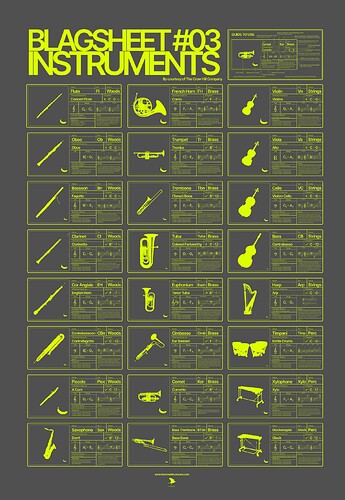In addition to points already snagged, the lowest note for the oboe is Bb3, not Bb4, and it’s top note is about G6, not G7. Bass oboe is not a common variant, but very uncommon
Cor Anglais (abbreviation can also be CA) range is E3 to A5 to be consistent
Top note of a piccolo is A7, not C8
In written parts, only keyboard instruments use 8va and 8vb signs.
Abbreviations for saxophones are S Sax, A Sax, T Sax, Ba Sax
French Horn is often simply called Horn, and abbreviated Hn You’ve got the Horn sounding notes an octave too high
I thought the normal abbreviation for cornet was cnt, and seem to have given it a one-note range (should be the same as the trumpet)
Bass trombone also has a one-note range. It is never a transposing instrument
Abbreviation for trumpet is tpt. And most trumpet players don’t have a “huge range”
Colliery euphonium players don’t play at concert, they play in Bb
Need to make it crystal clear that ranges (F4 - F4) are written ranges
Top of violin range is too high. Apart from as a soloist, or harmonics, E7, or even B6 is probably safer
String abbreviations are also vln, vla, vlc, db
Viola range in words doesn’t match the given range
Cello is also known as violoncello, not violon-cello. Top of the orchestral range is about A5, not A6 (unless harmonics)
Top written note for the double bass is an octave too low, though this is possibly a bit optimistic anyway
Common variants for all the stringed instruments and harp are wrong (they don’t exist)
Glockenspiel transposes 2 octaves (24 semitones) not one sounding range is G5 - C8, though some instruments go down to C5.
Timpani wrong clef. Composite range is D2 - A3. Worthwhile saying you normally have one of each drum size.
Xylophone sounding range is F4 to C8, all an octave higher than written
I think you could do with separate entries entries for Bass clarinet, vibraphone, marimba and tubular bells - I’d go along with suggestions for separate cheat sheets for woodwind, percussion, brass and strings.
The VSL Academy pages are mostly an accurate online resource Instrumentology | VSL - Academy
